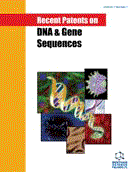Abstract
The invention of microarray technology has empowered scientists to quickly transition from single gene studies to massively parallel experiments investigating thousands of genes. The use of DNA microarrays relies on accurate design for probes that are immobilized on a surface and bind specifically to complementary targets in a complex solution. The quality of a set of DNA probes heavily relies on DNA hybridization – the process of joining two single-strands of DNA to form a double-stranded molecule, and is traditionally ensured by using specific design criteria. The design of DNA probes for microarrays requires very stringent criteria, due to the necessity of choosing unique sequences that perfectly complement specific regions from large genomic data sets, while avoiding hybridization with every other region of the same genome. Patents and research publications presenting various probe design methods are reviewed in this manuscript and future potential extensions of current technologies are suggested.
Keywords: Biosensor, DNA, hybridization, microarray, patent, probe design.
 7
7











